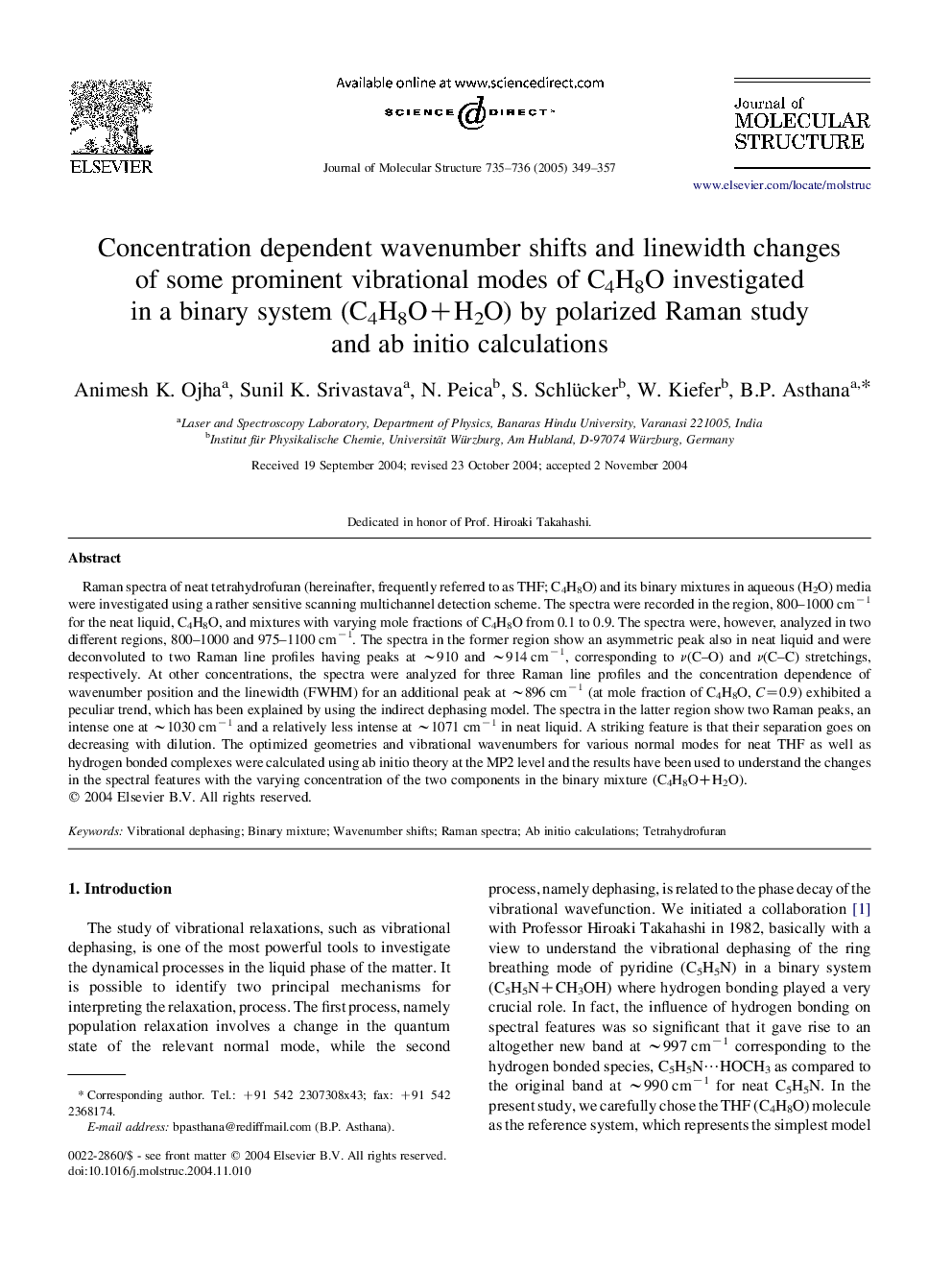| Article ID | Journal | Published Year | Pages | File Type |
|---|---|---|---|---|
| 9770415 | Journal of Molecular Structure | 2005 | 9 Pages |
Abstract
Raman spectra of neat tetrahydrofuran (hereinafter, frequently referred to as THF; C4H8O) and its binary mixtures in aqueous (H2O) media were investigated using a rather sensitive scanning multichannel detection scheme. The spectra were recorded in the region, 800-1000 cmâ1 for the neat liquid, C4H8O, and mixtures with varying mole fractions of C4H8O from 0.1 to 0.9. The spectra were, however, analyzed in two different regions, 800-1000 and 975-1100 cmâ1. The spectra in the former region show an asymmetric peak also in neat liquid and were deconvoluted to two Raman line profiles having peaks at â¼910 and â¼914 cmâ1, corresponding to ν(C-O) and ν(C-C) stretchings, respectively. At other concentrations, the spectra were analyzed for three Raman line profiles and the concentration dependence of wavenumber position and the linewidth (FWHM) for an additional peak at â¼896 cmâ1 (at mole fraction of C4H8O, C=0.9) exhibited a peculiar trend, which has been explained by using the indirect dephasing model. The spectra in the latter region show two Raman peaks, an intense one at â¼1030 cmâ1 and a relatively less intense at â¼1071 cmâ1 in neat liquid. A striking feature is that their separation goes on decreasing with dilution. The optimized geometries and vibrational wavenumbers for various normal modes for neat THF as well as hydrogen bonded complexes were calculated using ab initio theory at the MP2 level and the results have been used to understand the changes in the spectral features with the varying concentration of the two components in the binary mixture (C4H8O+H2O).
Related Topics
Physical Sciences and Engineering
Chemistry
Organic Chemistry
Authors
Animesh K. Ojha, Sunil K. Srivastava, N. Peica, S. Schlücker, W. Kiefer, B.P. Asthana,
